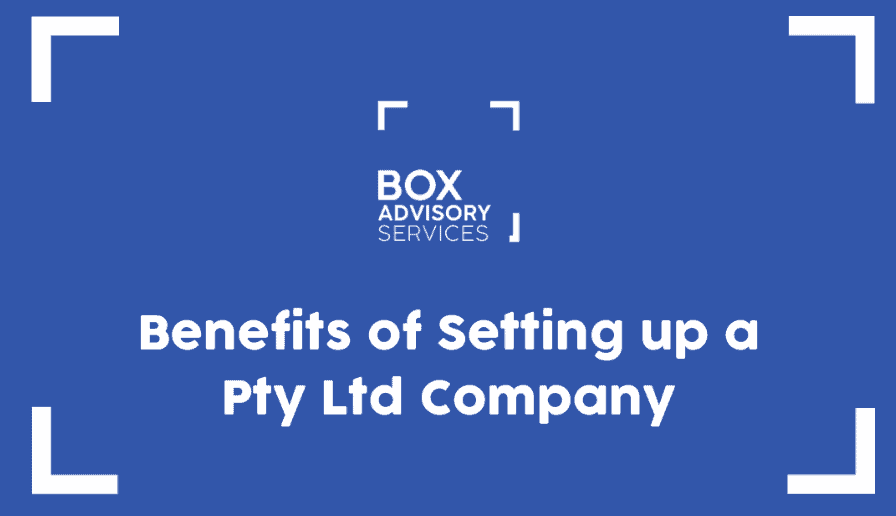
BY
|
Asset Protection Australia: Strategies for Safeguarding Your Wealth
Running a business or practising as a professional brings exciting opportunities, yet it also exposes personal wealth to risks ranging from lawsuits to economic downturns. When those risks collide with your assets, the results can be devastating.
Every day, Australian business owners deal with clients, contracts, employees, and third parties. Any one of these interactions could potentially trigger financial liabilities or legal disputes. Without adequate protection, you risk losing the wealth you’ve built. Asset protection helps shield your assets from these kinds of financial threats.
This article explains exactly how asset protection works, what makes it necessary, and which strategies can help safeguard what you’ve worked so hard to build.
What Does Asset Protection Mean?
Asset protection means legally arranging your financial affairs to minimise risk to your personal and business assets from claims by creditors or legal judgments. Essentially, it helps keep your personal wealth separate and secure if your business encounters trouble.
For example, if your business owes money or someone files a lawsuit against you, good asset protection practices reduce the risk that your personal home or savings will be used to satisfy those debts.
Australia provides clear legal methods to protect assets, such as forming companies or using discretionary trusts as separate legal entities. Operating a business through a limited liability company creates a legal separation between you and your business.
If creditors chase unpaid business debts, the separation generally means they can’t access your personal bank accounts, house, or other private assets.
On the flip side, if you run your business as a sole trader, this separation doesn’t exist. As the legal owner, your personal assets are directly exposed, meaning your family home, personal savings, and investments could be at risk if your business faces financial difficulty or legal issues.
Why is Asset Protection Important?
Owning a café, running a consultancy or freelancing as an engineer brings direct liability. A burnt-out coffee roaster could trigger a fire claim, a coding error might create a six-figure loss for a client, or a single slip in workplace safety could spark litigation.
Additionally, personal injury claims can arise, impacting one’s financial stability and underscoring the need for appropriate insurance coverage and trust structures. If the enterprise operates as a sole trader or simple partnership, those claims follow the owner home, placing property, superannuation and savings at risk.
Even where the business runs through a company, personal exposure sneaks back in when directors sign personal guarantees, trade while insolvent or mix private and company finances. Professional advisers are no safer.
Building an asset protection plan achieves three big wins:
- Peace of mind – owners make bold commercial decisions knowing personal wealth is walled off.
- Negotiating power – creditors see little value in pursuing a claim against someone with few reachable assets.
- Succession strength – protected assets transition smoothly to the next generation or retirement vehicle, unburdened by legacy liabilities, securing one’s financial future.
The next sections explain how business structures, trusts, insurance and strategic ownership splitting work together to deliver those benefits.
Choosing the Right Business Structure for Asset Protection
Selecting an appropriate business structure can significantly influence how effectively you protect your personal assets.
In Australia, four primary structures exist, each offering different levels of asset protection.
Sole Trader
Operating as a sole trader means there’s no legal distinction between you and your business. While straightforward to set up and manage, it provides virtually no asset protection, leaving your personal assets completely exposed to business liabilities.
Partnership
A partnership shares similarities with sole trading but involves multiple people. Each partner is personally responsible for all business debts, regardless of who incurred them.
This arrangement increases your vulnerability because your personal assets remain accessible to creditors. Additionally, when a family member is a business partner, it can complicate financial responsibilities and increase the risk of personal conflicts affecting the business.
Company (Pty Ltd)
Establishing a proprietary limited (Pty Ltd) company provides effective asset protection due to its status as a separate legal entity. From an asset protection perspective, this structure is beneficial as it separates personal assets from business risks, safeguarding wealth.
Shareholders generally aren’t personally responsible for company debts beyond their initial investment, provided they’ve avoided giving personal guarantees.
Discretionary Trust (Family Trust)
Discretionary trusts, particularly when combined with a corporate trustee, offer robust asset protection.
These trusts are designed to protect family assets by legally owning the assets, which are managed by the trustee on behalf of beneficiaries. Beneficiaries don’t have fixed entitlements, making it difficult for creditors to access these assets if a beneficiary faces financial trouble.
The following table summarises the pros and cons clearly:
| Business Structure | Asset Protection Level | Pros | Cons |
|---|---|---|---|
| Sole Trader | Very Low | Easy setup, full control | No asset protection, unlimited liability |
| Partnership | Low | Shared resources, simple to manage | Partners personally liable for all debts |
| Company (Pty Ltd) | High | Limited liability, separate entity | Higher setup costs, ongoing compliance |
| Discretionary Trust | High | Strong protection, tax flexibility | Complex setup, ongoing admin costs |
When starting or reviewing your business structure, consider not only immediate ease but the long-term security of your personal wealth.
Taking professional advice on this topic can save significant stress and financial loss down the line.
Using Discretionary Trusts to Protect Assets
Discretionary trusts (commonly known as family trusts) offer one of the most effective ways to shield assets in Australia. In this structure, the trustee manages and holds the trust’s assets for the benefit of chosen beneficiaries, distributing income and capital at their discretion.
This discretionary distribution creates a valuable legal layer, making assets difficult for creditors to claim. If a beneficiary encounters legal or financial trouble, creditors generally cannot access trust-held assets because beneficiaries have no guaranteed entitlement to those assets.
Australians frequently choose trusts because of their dual advantages: tax flexibility through income splitting and significant asset protection.
For maximum effectiveness, many Australians set up trusts using a corporate trustee (a Pty Ltd company). Doing so adds another protective layer, separating trust assets from the personal finances of trustees and beneficiaries.
This arrangement means even if you face personal insolvency or legal action, trust assets often remain secure.
Careful consideration is necessary, however.
Establishing a trust involves upfront costs, including legal and accounting fees. Maintaining a trust also requires ongoing administration, tax filings, and adherence to strict regulations. Transferring family assets into a trust can trigger capital gains tax or stamp duty, depending on the asset type and jurisdiction.
Timing matters too.
Setting up a trust or transferring assets when financial trouble is imminent could prompt a court to reverse these transactions. Courts scrutinise such transfers carefully to ensure they’re legitimate and not merely attempts to evade creditors.
Planning early and seeking professional legal and tax advice ensures your trust structure genuinely protects your wealth without legal complications.
Insurance: Your Safety Net
Asset protection isn’t limited to legal structures alone.
Appropriate insurance coverage adds essential protection against claims or losses that could otherwise severely impact your business and personal finances. Many Australian business owners underestimate insurance’s importance, often discovering too late that their coverage is inadequate.
A recent survey revealed that approximately 12.8% of small businesses, including nearly one in four sole traders, currently have no insurance coverage at all. This lack of protection exposes their personal and business assets unnecessarily.
Some key types of insurance you should seriously consider include:
- Public Liability Insurance: Covers injuries or property damage to third parties resulting from your business operations, protecting you against significant financial claims.
- Professional Indemnity Insurance: Essential for consultants, professionals, or advisors, it covers claims arising from negligence or errors in the professional services provided.
- Product Liability Insurance: Protects businesses that manufacture, supply, or sell products. It covers claims for injuries or damages caused by defective products.
- Workers’ Compensation Insurance: Mandatory for businesses employing staff, this insurance covers medical expenses and wages if employees sustain workplace injuries.
- Business Assets Insurance: Protects your physical business assets, such as premises, equipment, or inventory, against theft, damage, or loss through natural disasters or accidents.
- Cyber Insurance: Increasingly necessary due to rising digital risks, cyber insurance covers losses resulting from data breaches, ransomware attacks, or cyber fraud.
Underinsurance remains common, with around two-thirds of businesses insufficiently covered for potential liabilities. A single large uninsured claim can quickly bankrupt a business, demonstrating clearly the vital role comprehensive insurance coverage plays in asset protection strategies.
Review your insurance needs regularly, and consider professional advice from insurance brokers to tailor coverage precisely to your risks. Appropriate insurance provides peace of mind, significantly reducing financial stress in unexpected situations and protecting your personal and professional future.
Transferring Assets to Spouses or Trusted Parties
Another practical strategy to protect your personal assets involves transferring ownership of significant assets to a spouse or another trusted individual. Doing this correctly can effectively shield these assets if you face financial or legal claims arising from your business activities or profession.
For example, many Australian business owners, especially those in high-liability professions such as medicine or construction, often consider shifting assets like property or investments into their partner’s name.
This arrangement ensures that if the higher-risk spouse encounters financial trouble, those assets remain outside the reach of creditors or legal claims.
It’s common for couples to designate one spouse as the “low-risk” individual.
Typically, this spouse has minimal direct involvement in risky business ventures or professional activities. This concept, known as low risk spousal ownership, involves transferring valuable assets like the family home or investments solely into the low-risk spouse’s name.
For example, Francesca and George might transfer property ownership to Francesca, who has a stable financial background, to enhance protection against potential business liabilities. Under these circumstances, creditors pursuing debts from the high-risk partner generally cannot legally claim the assets held by the low-risk partner.
This strategy, however, demands caution.
Timing matters significantly. Courts carefully scrutinise asset transfers made shortly before bankruptcy or litigation to determine whether these transfers were attempts to evade creditors. If a transfer is deemed fraudulent or intentionally designed to avoid legitimate debts, the court can reverse it, exposing those assets once again.
Another consideration involves what legal experts term a “resulting trust”.
If an at-risk spouse pays entirely for an asset but places it solely in the low-risk partner’s name, courts might determine the asset actually belongs to the spouse who funded it. In this scenario, the assets could still become accessible to creditors.
Proper legal documentation and transparent financial practices are therefore essential. This strategy should ideally form part of a broader, proactive asset protection plan rather than a last-minute defensive measure.
Trust and clear communication between involved parties remain critical because transferring assets means relinquishing legal ownership and control. In circumstances of divorce or personal disputes, transferred assets could become complex issues, potentially leading to unintended outcomes.
Considering these factors, professional legal and financial advice is recommended.
Key Takeaways
- Asset protection doesn’t require complicated schemes or endless resources. With careful planning, any Australian business owner or professional can effectively secure personal and business assets.
- Your chosen business structure significantly influences your asset protection level. Operating as a sole trader or partnership exposes personal assets to risk. Choosing a Pty Ltd company or discretionary trust structure considerably reduces that exposure.
- Family trusts offer a robust mechanism for asset protection due to their separation of legal ownership and discretionary distributions. When combined with a corporate trustee, trusts offer strong protection against creditors.
- Legal structures alone can’t eliminate every risk. Comprehensive insurance coverage, tailored to your business’s specific needs, provides essential protection against unforeseen claims and liabilities. Public liability, professional indemnity, workers’ compensation, business assets, and cyber insurance are particularly important.
- Transferring assets into a spouse’s name or a trusted individual can shield personal wealth from creditors or legal claims, provided the transfer is legitimate, timely, and properly documented. Transfers made just before trouble strikes are vulnerable to reversal by courts.
- Implementing effective asset protection strategies is most effective when customised to your specific circumstances. Regularly consulting with professional advisers, such as accountants, legal experts, and financial planners, ensures your strategy remains robust, compliant, and effective as your financial situation evolves.
Ready to Protect Your Assets?
If you’re looking for personalised advice to protect your business and personal assets effectively, the team at Box Advisory Services is here to help. Our expert accountants specialise in asset protection strategies tailored to Australian small businesses and professionals.
Contact Box Advisory Services today to discuss your needs and ensure your wealth is secure for the future.



